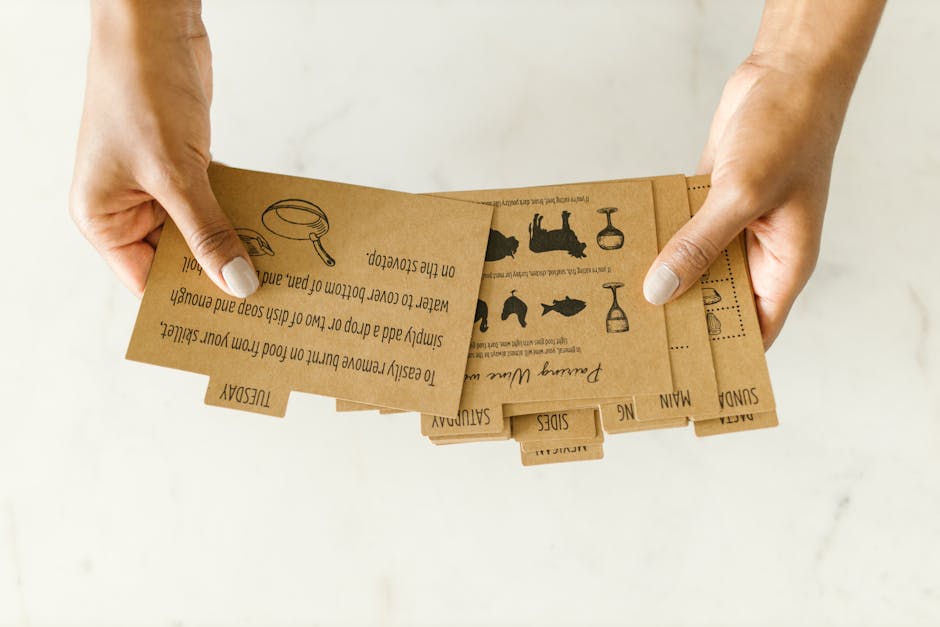Understanding Your Pet’s Basic Needs
Nutrition: The Foundation of Pet Health
Ensuring proper nutrition for your pet is essential for their overall health and well-being.
A balanced diet tailored to your pet’s specific needs is crucial.
It’s essential to feed them high-quality pet food that meets their dietary requirements.
For example, for dogs, a diet rich in protein, vitamins, and minerals is vital for their muscle development and energy levels.
Similarly, cats require a diet high in protein and taurine to support their unique nutritional needs.
Consulting with a veterinarian can help you determine the best diet for your pet’s optimal health.
Exercise: Key to a Lively Companion
Regular exercise is key to keeping your pet healthy and happy.
Dogs, for instance, need daily physical activity to maintain their weight, muscle tone, and overall well-being.
Activities like walks, playtime, and interactive toys are excellent ways to engage your dog mentally and physically.
Cats also benefit from exercise through interactive play sessions and access to climbing structures.
Tailoring the exercise routine to your pet’s breed, age, and health condition is essential for their physical and mental stimulation.
Social Interaction: Importance for Emotional Well-being
Social interaction plays a crucial role in your pet’s emotional well-being.
Both dogs and cats thrive on companionship and human interaction.
Spending quality time with your pet, whether through play, grooming, or training, strengthens your bond and helps prevent behavioral issues.
Socialization with other pets and exposure to various environments can also enrich your pet’s life and prevent feelings of loneliness or anxiety.
Prioritizing social interaction in your pet’s routine fosters a positive and emotionally fulfilling environment for them.
Creating a Safe Environment for Your Pet
After addressing your pet’s basic needs like nutrition, exercise, grooming, and mental stimulation, ensuring a safe environment is crucial for their overall well-being.
Pet-Proofing Your Home
Pet-proofing your home is essential to prevent accidents and keep your furry friend safe.
Here are some key steps I recommend taking:
- Secure Hazardous Items: Keep harmful substances like cleaning products, medications, and small objects out of reach.
- Cover Electrical Outlets: Block access to electrical outlets to prevent your pet from getting injured.
- Hide Cables and Wires: Conceal cords to avoid chewing hazards and potential electric shocks.
- Remove Toxic Plants: Some plants are toxic to pets, so it’s vital to remove them from your home or place them out of reach.
- Secure Trash Bins: Keep trash bins securely closed to prevent your pet from ingesting harmful items.
By implementing these measures, you can create a safe environment where your pet can thrive without facing unnecessary risks.
Choosing the Right Shelter and Bedding
Selecting appropriate shelter and bedding for your pet is crucial for their comfort and well-being.
Consider these tips when making these choices:
- Size and Type: Choose a shelter that suits your pet’s size and breed, providing enough room for them to move comfortably.
- Material Quality: Opt for bedding made from safe, durable materials that are easy to clean and maintain.
- Temperature Control: Ensure the shelter provides adequate warmth in cold weather and is well-ventilated during warmer months.
- Comfortable Bedding: Select bedding that offers cushioning and support to help your pet relax and sleep soundly.
- Washable Options: Pick bedding that is machine washable to maintain cleanliness and hygiene.
By carefully selecting the right shelter and bedding, you can create a cozy and secure space where your pet feels safe and comfortable.
Routine Health Checks and Preventative Care
Continuing with the theme of ensuring optimal health and happiness for our pets, I’ll delve into the crucial aspects of routine health checks and preventative care.
These practices are fundamental in maintaining your furry friend’s well-being and catching any potential issues early on.
Vaccination Importance and Schedule
I’d like to highlight the significance of vaccinations in safeguarding your pet’s health.
Vaccines play a vital role in preventing various diseases that can be harmful or even fatal to your pet.
By following a proper vaccination schedule recommended by your veterinarian, you can provide essential protection against common illnesses.
It’s essential to stay up to date with vaccinations to ensure your pet’s immune system is equipped to fight off potential threats.
Regular Vet Visits and Early Disease Detection
Regular visits to the vet are key to monitoring your pet’s health and detecting any issues before they escalate.
Early disease detection is crucial in providing prompt treatment and improving the chances of a successful recovery.
During these visits, the vet can conduct thorough examinations, address any concerns you may have, and recommend preventative measures based on your pet’s individual needs.
Building a strong relationship with your veterinarian ensures that your pet receives the best possible care throughout their life.
Grooming and Hygiene for Pets
Brushing and Bathing Best Practices
When it comes to grooming your pets, it’s essential to establish a regular routine for brushing and bathing.
Brushing your pet’s coat helps to remove dirt, debris, and loose fur, preventing matting and tangles.
It also stimulates the skin and distributes natural oils, keeping your pet’s coat healthy and shiny.
Depending on your pet’s breed and coat type, the frequency of brushing can vary.
For example, long-haired breeds may require daily brushing to prevent mats, while short-haired breeds can be brushed a few times a week.
Bathing your pet is another crucial aspect of grooming. Select a pet-friendly shampoo recommended by your veterinarian, as human products can be harmful to pets’ skin.
The frequency of baths depends on your pet’s lifestyle and coat condition.
Over-bathing can strip the skin of essential oils, leading to dryness and irritation. Always use lukewarm water and ensure thorough rinsing to prevent skin issues.
Drying your pet thoroughly after a bath is vital, especially for pets prone to skin infections in moist environments.
Nail Trimming and Dental Care
Trimming your pet’s nails is essential to prevent overgrowth, which can be painful and cause mobility issues.
Long nails can also curl into the paw pads, leading to infections.
Regular nail trims every few weeks, depending on your pet’s activity level, can help maintain healthy nails.
If you’re unsure how to trim your pet’s nails, consult your veterinarian or a professional groomer for guidance.
Dental care is often overlooked but crucial for your pet’s overall health. Dental disease is common in pets and can lead to various health issues if left untreated.
Brushing your pet’s teeth regularly with a pet-specific toothbrush and toothpaste can prevent tartar buildup and maintain good oral hygiene.
Dental chews and toys designed to promote dental health can also aid in reducing plaque and tartar.
Regular dental check-ups with your veterinarian can catch any dental issues early and ensure your pet’s teeth and gums are in optimal condition.
Mental Stimulation and Enrichment Activities

Toys and Puzzles for Cognitive Health
When it comes to mental stimulation for pets, interactive toys and puzzles are fantastic tools.
They engage our animals’ minds, prevent boredom, and encourage problem-solving skills.
Toys like treat-dispensing balls or puzzle feeders provide mental challenges while rewarding pets for their efforts.
Pets enjoy the interactive nature of these toys, keeping them engaged and mentally sharp.
Interactive toys come in various forms, such as food puzzles or toys that require pets to figure out how to access a hidden treat.
These toys not only provide mental stimulation but also offer a fun way for pets to stay entertained and active.
Training and Behavior: Building a Strong Bond
Training sessions are not only about teaching commands but also about fostering a strong bond between pet and owner.
Positive reinforcement techniques, such as clicker training or using treats, can help strengthen this bond while encouraging good behavior.
Regular training sessions not only teach pets how to behave but also provide mental stimulation, boosting their confidence and overall well-being.
It’s important to make training sessions fun and rewarding for pets to keep them engaged and eager to learn.
Consistency and patience are key when it comes to training.
By setting aside dedicated time for training each day, pet owners can help reinforce good behavior and create a lasting bond with their furry companions.
Handling Common Behavioral Issues
Managing Separation Anxiety
To address separation anxiety in pets, it’s essential to create a consistent routine.
Make departures and arrivals low-key to help pets adjust. Providing them with engaging toys or treats before leaving can distract and comfort them.
Gradually increase the time you’re away to help them become more independent. Seek advice from a professional trainer if the anxiety persists.
Addressing Aggression and Resource Guarding
Dealing with aggression and resource guarding requires patience and understanding.
Avoid punishing aggressive behavior, as it can escalate the situation.
Identify triggers that lead to aggression and work on desensitizing your pet to them.
Enrich their environment with toys and activities to reduce stress.
Consult a trainer or behaviorist for a personalized plan to address these issues effectively.
Nutrition and Diet Enhancements
Understanding Food Labels and Ingredients
When it comes to selecting the right pet food, understanding food labels and ingredients is crucial.
As a pet owner, I always prioritize checking the labels for essential information.
Look for phrases like “complete and balanced” to ensure your pet is getting all the necessary nutrients.
Ingredients listed first are the most abundant, so prioritize high-quality proteins like chicken or fish.
Avoid artificial additives and by-products, opting instead for natural sources of vitamins and minerals.
Supplements: Do Pets Need Them?
As a pet enthusiast, I often get asked about the necessity of supplements for pets.
While a well-balanced diet typically provides all the necessary nutrients, some pets may benefit from supplements under specific circumstances.
For example, senior pets may require joint supplements for mobility, and pets with certain health conditions might need additional support.
Consulting with a vet is the best way to determine if supplements are appropriate for your pet’s individual needs.
The Role of Pet Insurance
As a pet owner, I understand the importance of being prepared for unexpected healthcare costs that may arise during my furry friend’s lifetime.
That’s where pet insurance plays a critical role in providing financial support for various medical expenses.
What Does Pet Insurance Cover?
Pet insurance typically covers a range of medical expenses related to your pet’s health. These may include but are not limited to:
- Accidents: Coverage for injuries resulting from accidents such as broken bones, lacerations, or ingestion of foreign objects.
- Illnesses: Treatment for various illnesses like cancer, infections, or digestive issues.
- Emergency Care: Financial assistance for emergency vet visits or overnight stays at the animal hospital.
- Diagnostic Tests: Coverage for diagnostic procedures such as x-rays, blood tests, or ultrasounds.
- Prescriptions: Helps offset the cost of prescription medications prescribed by your veterinarian.
Understanding what your pet insurance policy covers is essential to ensure you are prepared for any unexpected health issues your pet may encounter.
Choosing the Right Plan for Your Pet
When selecting a pet insurance plan, it’s crucial to consider factors such as:
- Coverage Options: Evaluate the coverage offered for accidents, illnesses, and preventive care.
- Deductibles and Co-pays: Understand the out-of-pocket expenses you’ll need to cover before your insurance kicks in.
- Coverage Limits: Check if there are any caps on payouts per incident, annually, or over the pet’s lifetime.
- Pre-existing Conditions: Clarify how pre-existing conditions are handled by the insurance provider.
- Network Veterinarians: Determine if the insurance plan allows you to visit your preferred vet or if you’re restricted to a network of providers.
By choosing the right pet insurance plan that aligns with your pet’s needs and your budget, you can ensure their well-being without facing financial constraints during times of medical emergencies.



